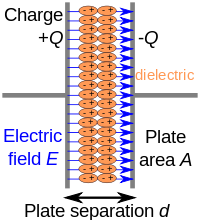
Photo from wikipedia
We present an approach to increase the detection sensitivity of NMR by shortening the spin-lattice relaxation time using transient paramagnetic species created by light irradiation of "optorelaxer" molecules. In the… Click to show full abstract
We present an approach to increase the detection sensitivity of NMR by shortening the spin-lattice relaxation time using transient paramagnetic species created by light irradiation of "optorelaxer" molecules. In the ultimate implementation of this concept, not yet realized here, these transient species are absent during the detection period, thereby avoiding the loss of spectral resolution caused by inhomogeneous broadening from paramagnetic species. Real-time control of NMR relaxation by visible light is demonstrated with Fe(II)(ptz)6(BF4)2, (ptz = 1-propyltetrazole), abbreviated FePTZ. Illumination of FePTZ at 30 K results in a decrease of the 1H NMR spin-lattice relaxation time T1 due to formation of a high spin photoexcited state. The 1H NMR of polystyrene containing a low concentration of FePTZ molecules shows a similar reduction in T1, establishing that FePTZ can act as an optorelaxer for the protons of a matrix. Numerical modeling of the spin-diffusion processes from the protons in a FePTZ core to those in a shell of polystyrene accounts for the observed T1 effects under both dark and light conditions. Additionally, 1H MAS (magic-angle spinning) NMR results for pure FePTZ provide information on the isotropic and anisotropic portions of the electron-nuclear hyperfine interactions.
Journal Title: Solid state nuclear magnetic resonance
Year Published: 2018
Link to full text (if available)
Share on Social Media: Sign Up to like & get
recommendations!